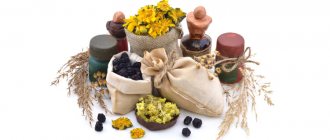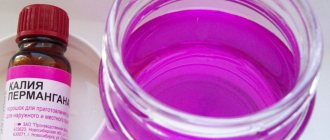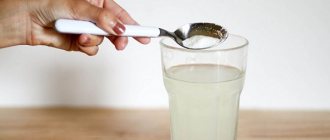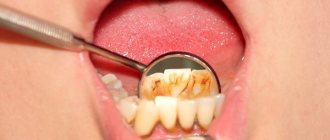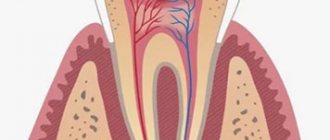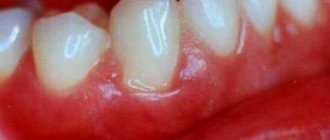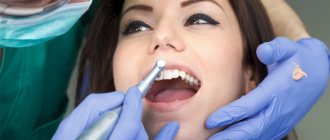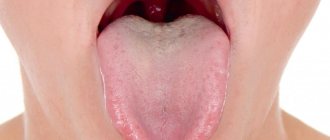A furuncle on the lip is a painful lump with pus inside, which is formed due to inflammation of the pilosebaceous follicle and surrounding tissues. Occurs with equal frequency in children and adults. This unpleasant pathology causes the patient a lot of negative emotions and physical suffering. It can be very dangerous to health if an infection gets into the bloodstream. To avoid undesirable consequences, you need to know the symptoms, and begin treating furunculosis only after consulting a doctor.
Possible causes of a boil on the lip
A boil on the lip develops due to pathogenic bacteria that have entered the hair follicle. Middle-aged adults and teenagers are more prone to this pathology. Here is a list of people who are at risk:
- Those who eat poorly and irrationally.
- Patients with skin problems.
- Athletes who engage in general equipment or contact sports. There is a risk of transmitting bacteria to each other.
- Carriers of staphylococcus.
- People with a weakened immune system: with diabetes, HIV-infected people, those who take medications that suppress the body’s protective barrier (during treatment for oncology, organ transplantation).
- Who has bad habits, in particular alcoholism.
- People with excessive sweating of the skin.
- Those women who do not wash off their face makeup at night and do not regularly cleanse their skin of subcutaneous fat.
- Persons who do not maintain personal hygiene well and live close to public buildings where they also do not observe it: shelters for persons without a fixed abode, places of detention, barracks.
Provocateurs of furunculosis on the nasolabial triangle:
- lack of vitamins;
- hypothermia of the body;
- herpes, for which the ointment was incorrectly selected;
- mechanical damage to the lips and skin;
- body pollution;
- metabolic failures;
- the presence of certain diseases: streptococcal pyoderma, eczema, anemia, scabies;
- using low-quality or aggressive toothpaste, which corrodes the skin of the lips, causing cracks.
Experts cannot name the exact reason why boils appear in people.
The development of furunculosis is also facilitated by blockage of the sebaceous glands. As a result of this, black dots are formed first, then white pimples, which can later develop into boils.
Doctors say that people with chronic infections and dysfunctions of certain organs and systems are at risk:
- Gastrointestinal tract;
- urinary and endocrine systems;
- protective function of the epidermis.
Causes of abscesses
A boil on the cheek appears for various reasons. Unfavorable weather conditions, for example, severe frost and failure to follow basic rules of facial care, lead to the epidermis cracking and flaking. Neglect of hygiene or, conversely, fanaticism regarding cosmetic procedures, peeling, and cleansing also damages the skin and washes away the protective layer from the surface of the epidermis.
The skin is left without protection. Pathogenic bacteria that fall on it penetrate into the deeper layers and provoke inflammatory processes, including furunculosis.
Other causes of boils on the face:
- Previous illnesses that weaken the immune system (for example, colds, flu).
- Chronic or autoimmune diseases, such as diabetes.
- Improper metabolism.
- Avitaminosis.
- Abuse of sweet, flour, fatty foods.
- Alcohol, smoking.
- The habit of touching your face with your hands, combing, scratching, rubbing.
As a result of such actions, boils also appear on the cheeks, because the opportunity to wash your hands during the day is not provided so often.
Mechanism of occurrence
It is difficult to confuse a boil with a common eel, since it has a different formation mechanism. There are three stages in the formation of a boil on the lip:
- At the first stage, a person feels unbearable itching in the lips. Particularly disturbing is the place where the inflammatory process begins. There is also swelling in the affected area and redness.
- At the second stage, a boil appears on the upper or lower lip, vaguely similar to a pimple. Its distinctive feature is the formation of a capsule with pus inside. The boil can reach a maximum size of 3 cm. Also at this stage, the boil may spontaneously open, resulting in the release of a yellow-green purulent mass.
- The third stage is the healing stage, during which the formed wound decreases in size and the tissue gradually contracts, forming a scar on the skin.
If the pathology affects the inner part of the lips, then there is a risk of deterioration in general well-being and an increase in body temperature. This state lasts for a couple of days. If no therapeutic measures are taken during this time, sleep disturbance and the appearance of painful sensations may occur even if the lip on which the boil is located is slightly touched.
In women, boils can affect the labia. In this case, inflammation of the Bartholin glands occurs (bartholinitis), which can become chronic with the further formation of a cyst. Often the pathology is of an infectious nature and is associated with STD pathogens.
Abscess on the gum and its symptoms
An abscess is a painful process of suppuration in a place where an infection occurs. Most often, inflammation occurs in the area of the diseased tooth. The compaction with pus is a protective mechanism that prevents the infection from spreading throughout the body. If you do not consult a dentist in a timely manner, the abscess can destroy the jaw bone, as well as the periodontal structure, which sometimes leads to tooth extraction.
The first signs of infection in the gums are pain and discomfort while eating. Symptoms of an abscess on the gum:
- continuous throbbing pain;
- pain when pressing on a tooth;
- discomfort when eating hot/cold foods;
- bitter taste in the mouth;
- swelling and redness of the face;
- bleeding from the gums;
- mobility and change in the natural color of the tooth;
- lump on the gum and swelling of the face;
Types of ulcers and their features
If you have a boil in the nasolabial triangle, then it may not be a boil, but another disease that differs from furunculosis in the mechanism of development, symptoms, appearance and treatment methods:
- Aphtha is a manifestation of aphthous stomatitis. The disease differs from others in that white ulcers are localized not only on the lips, but also on the mucous surface of the mouth. In severe cases, the entire oral cavity may be affected.
- Herpes - blisters with transparent contents inside. It can appear on both the lower lip and the upper lip. Based on the initial symptoms, a cold on the lips can be confused with the formation of a boil. However, soon the lips begin to tingle and become covered with one or more blisters, which will soon be covered by a crust. Herpetic rashes are caused by a viral infection and can spread to healthy areas of the body.
- Lipoma is not exactly an abscess, but a benign formation on the lip, which is a stationary, dense subcutaneous ball. Inside it is a capsule with fatty contents, as well as dead epithelial cells. This neoplasm does not threaten your health if you do not try to get rid of it yourself. Lipoma can only be removed surgically.
Possible complications
If the boil was removed incorrectly, the patient's condition may worsen. At home, it is difficult to thoroughly clean the wound from pus and necrotic masses. There is a risk of secondary infection, complications associated with the fact that dirt gets into the wound from “bare” hands that no one has disinfected.
The contents of the removed abscess contain the causative agent of pustular skin diseases - the dangerous bacterium Staphylococcus aureus. If it gets on healthy skin, another part of the cheek will become infected.
Risks and complications
Regardless of where the boil is located - under the upper or lower lip, it is dangerous because it is located close to the anterior facial vein, due to which the inflammation can reach the brain. With this complication, death is possible.
There are cases of acute disease when necrosis and suppuration affect the deeper layers of the skin. The inflammatory process can even reach the subcutaneous tissue, which is why there is a risk of phlegmon or abscess formation.
When the boil has grown in size, it causes severe pain under any mechanical impact. It hurts to chew, open your mouth, and touch your lips. In this case, many people decide to squeeze out the boil themselves, but this is strictly prohibited. There is a risk of the formation of a malignant boil, which can lead to very negative consequences:
- the pathology will spread to the orbit;
- thrombosis of the facial veins will occur with subsequent damage to the meninges.
Another complication from boils is the formation of an abscess or phlegmonous inflammation. These phenomena are observed:
- with weakened immunity;
- in those who have severe concomitant diseases;
- in case of improper treatment.
Clinical picture
The symptoms of a boil on the lip are difficult to confuse with signs of acne:
- Swelling, pain. The pathology begins with burning, tingling of the skin, which turns red and swells. When touched, a person experiences pain. At the site of the swelling, an abscess soon forms, which hurts even in a calm state.
- It is possible that the patient’s body temperature will increase, weakness, signs of intoxication will appear, and the submandibular and cervical lymph nodes will increase.
- Pus mixed with blood begins to come out. This occurs approximately 4 days after the formation of the boil. As the wound enlarges, the contents of the boil are released more intensely.
- With the release of purulent contents, the swelling subsides, the pain becomes weaker, and the boil heals. In general, the process lasts from 1 to 3 weeks.
Treatment of furunculosis
Your doctor will tell you in detail how to treat boils on the lips. All therapy must be strictly under medical supervision.
Self-medication is life-threatening. Therapy is always complex. At an advanced stage of the disease and in case of complications, surgical intervention is resorted to.
Drugs
Among the pharmaceutical products, the doctor may prescribe the following:
- Antibiotics. The most effective antibiotic drugs in the fight against furunculosis are Cefixime and Amoxilav in the form of injections or tablets. Antibiotics should not be used without a doctor's prescription, especially for the treatment of children, pregnant women, and lactating women.
- It is also necessary to take immunotherapy drugs: Staphylococcal antifagin, Antistaphylococcal immunoglobulin, vitamins B, C, nicotinic acid.
- It is important to disinfect the affected area, especially when purulent contents leak, using a weak solution of potassium permanganate or hydrogen peroxide. Miramistin can be used for this purpose.
- It is recommended to apply compresses with Salicylic ointment and Baziron. This will help the abscess open faster and shorten the purulent process.
- Treat the problem area with antiviral ointments Zovirax, Acyclovir.
In order for the wound to heal faster, in some cases electrophoresis and UHF are prescribed. Thanks to such physiotherapy, the development of phlegmon and abscess can be avoided.
If the process of maturation of purulent content has already begun, then the boil on the lip is injected with an antibiotic or Novocaine to relieve pain and prevent infection from the boil. This method is not used to treat children.
Folk remedies
You can get rid of boils using traditional methods of treatment. For this purpose, take herbal decoctions or apply medicinal products to the affected area, which will draw pus from the boil:
- Nettle decoction. This is an excellent blood cleanser. Take 5-6 g of dried nettle leaves, pour in two glasses of boiling water, and let simmer in a water bath for 10 minutes. After this, do not remove the container from the pan, let it stand there for another couple of hours. Take the decoction three times a day, ½ cup, until the ulcers completely disappear.
- Ointment with onions and soap. Bake two halves of the onion in the oven until almost black, mix with grated laundry soap, apply to the boil, cover with a bandage and secure with a band-aid. It is better to do the procedure before bed and leave the compress overnight. This will make the boil burst faster.
- Aloe juice. Mix the juice of this plant and olive oil in equal proportions. Apply to the problem area, leave until completely absorbed.
- Ointment with wax. Melt beeswax (1 large spoon) and the same amount of lard in a water bath. Cool and apply to the affected area. The ointment will draw out all the pus, relieve irritation, and soothe the skin. After the procedure, lubricate the area of the boil with an alcohol tincture of propolis or celandine.
Surgical intervention
If it is not possible to quickly cure a boil on the lip and there is a risk of an abscess, then they resort to surgical intervention. It is performed only in a hospital setting under local anesthesia.
After the operation is completed, the wound is washed and lubricated with wound-healing ointment. This will have to be done at home. The most effective ointments for this purpose are Erythromycin and Synthomycin liniment.
Features of child treatment
Parents, having noticed a boil on their child’s cheek, do not always know what to do. It is not recommended to treat your baby with folk remedies. He needs the help of a doctor who will take into account not only the external signs of inflammation, but will also prescribe a blood test, prescribe medications, and, if necessary, refer the child to a surgeon.
If the abscess is very painful, you can give your child paracetamol or ibuprofen. Make sure that the baby does not pick, scratch or touch the sore spot.
What is prohibited to do
The effect of treating a boil will be positive if you do not make mistakes. Here are some actions that are prohibited from doing with abscesses on the lip:
- Do not rub, scratch, or touch the boil with your hands during treatment.
- Do not try to open the formation yourself: do not pierce or squeeze it out. You can introduce an infection into the wound, even if you treat the instrument with alcohol.
- Do not apply cosmetic creams or foundation to the affected area and do not get it too wet.
- Do not prescribe self-medication. This is especially true for illness in children.
- If you see the boil growing and nothing is helping, see a dermatologist.
- Before a doctor examines the affected area, do not use dyes (iodine, brilliant green), as this interferes with the diagnosis.
Preventing boils
To avoid the appearance of boils on the lips, you must follow some preventive measures:
- Maintain personal hygiene. Do not use other people's cosmetics or hygiene items, as this is how staphylococcus infection occurs.
- Balance your diet. It should be complete and correct (less flour, fatty, sweet, more fruits and vegetables).
- If wounds form on the skin of your lips and around them, be sure to disinfect them.
- Lead a healthy lifestyle, play sports, get fit.
Furunculosis is a dangerous disease. If you delay in treating boils on your lips, you may experience serious negative consequences. To avoid this, engage in the prevention of pathology, and at the first sign of it, contact a dermatologist and refuse self-treatment.

